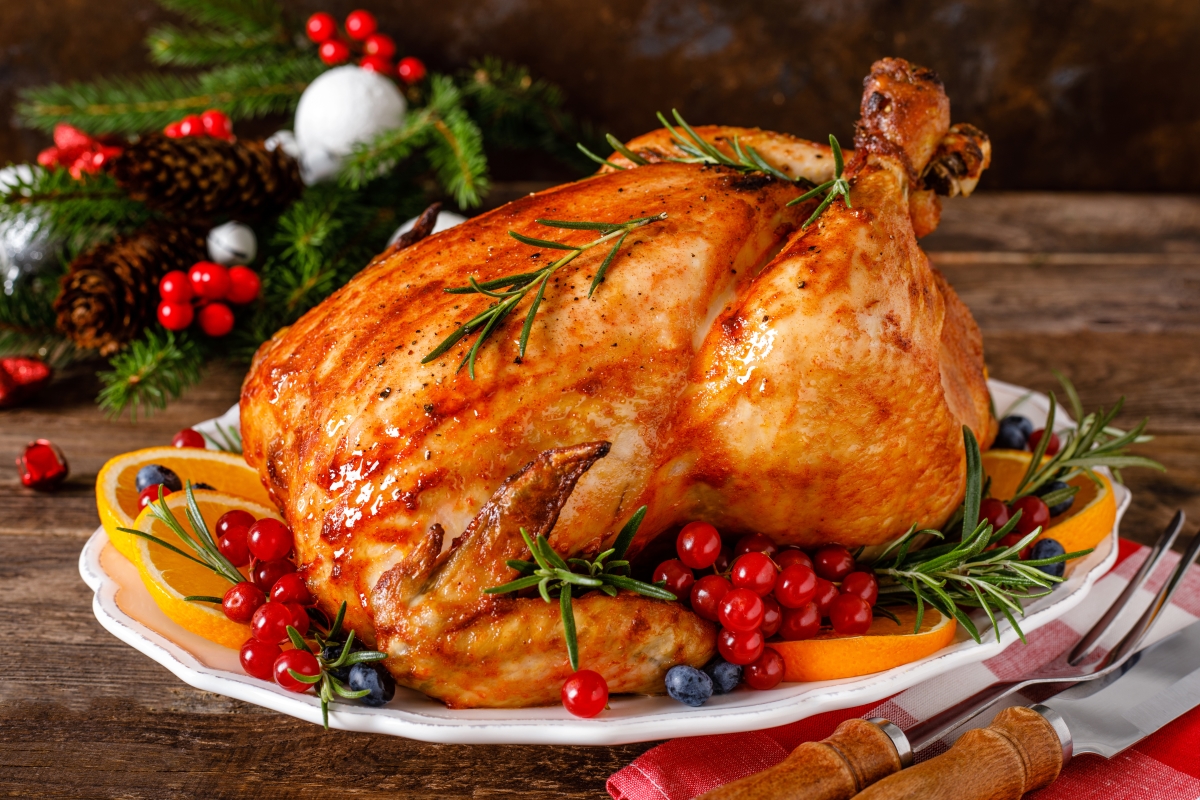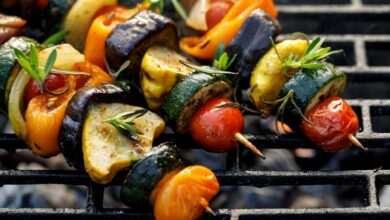
The turkey is the most important guest at your Thanksgiving table. It’s stressful to ensure this sweet thing doesn’t turn out the Clark Griswold’s turkey that split apart in all its dryness at their “National Lampoon’s Christmas Vacation” feast.
We’ve got nine ways to ensure your turkey isn’t sabotaged during the holidays. Keep reading on to find out how we can help make your Thanksgiving dinner a breeze.
Read More »
1. Don’t Forget To Remove The Giblets
Some people insist on eating the giblets, but most people turn away in disgust. The tiny little bags are often left inside the turkey because you either forget about them or have no clue they’re up in there. These two bags consist of the heart, gizzards, and liver. One of these packages of goodies is in the ribcage and one is usually in the neck. It’s not the most fun part of cooking the turkey, but that’s how they come. Maybe one day all turkeys will come without these two strange bags of innards. Ask everyone if anyone loves to eat gizzards before you throw them out. Someone may get excited by these weird little things. Many people use their innards to make giblet gravy. These parts are easily simmered with veggies for a flavorful stock. The liver will taste bitter, so it’s not usually included in the gravy. Some people mix the liver in their stuffing. when you combine the turkey pan drippings with the giblet stock, flour and cream, you get a wonderful, thick gravy. The chopped giblets can easily be thrown back in there.
2. Don’t Put A Cold, Wet Turkey In The Oven
The turkey thaws in your fridge, and you think it’s ready to go. It isn’t. You have to make sure you don’t throw it straight into your oven from the refrigerator. If you roast your turkey while cold and wet, it’ll cook dry and uneven. It’s also best to make sure there are no wet spots inside. Some people forget to dry out the crevices and just wipe down the outside. You’ve practiced the patience of thawing your bird friend. Now it’s time to adjust the temperature. We’ve all seen the shows where people totally forget to defrost the turkey. If you do that, your dinner is pretty much thrown to the birds. Make sure to thaw your bird for a day. Then you allow one day of defrosting time for every four pounds of the turkey.
3. Season All Parts Of The Turkey
One of the worst things about a turkey is when it tastes boring. Turkey should be flavorful and savory. If you aren’t brining your turkey, you need to season him. This doesn’t mean throwing some of your kitchen spices on the outside of the. It’s important to season both outside and inside of the turkey. The best news is that there is not just one way to season your dinner. You can brine him with brown sugar and cinnamon if you want a sweet taste. Season him with lemon herb butter or cajun spices. If you love the taste of a certain spice combination, try it on your turkey. Some people even fry their turkey for a boost of taste and moisture. As long as you don’t serve a turkey that tastes like old lunch meat, you’ll win at this dinner game.
4. Don’t Stuff The Turkey Wrong
Some people stuff the turkey before cooking it, but it’s best if you cook your dressing separate in a casserole dish. Stuffing just can’t reach the temperature it needs to be if it’s stuffed up inside the turkey. You can reach the temperature, but this would mean overcooking your turkey. Stuffing could also mean cross-contamination. While your turkey and stuffing are cooking together, you risk salmonella juices seeping into your stuffing. The bacteria won’t die if the stuffing never reaches the right temperature. If you want to stuff the turkey with something, go for garlic cloves or lemon halves.
5. Don’t Let The Oven Get Too Hot
A turkey doesn’t need to cook in a million-degree heat. If the oven is too hot, you’ll get a scary bird. The skin shouldn’t burn leaving the meat undercooked. You can get around this by cooking the bird at a slower pace. It’s best between 350 and 400 degrees F. Check out the turkey guide to ensure you’re cooking your bird at the right temperature for the right time. It’s also important to use your meat thermometer to ensure the turkey isn’t overcooking itself. The general rule to follow is cook your turkey for 20 minutes per pound.
6. Stop Opening The Oven Door
You want to baste the heck out of your turkey to make sure it’s juicy. News flash, every time you open the oven door to baste the turkey, you’re losing moisture. Basting may add color, but you’ll lose cook time and hurt your flavors when you open and close the oven door. If you want this color, it’s best to brush the exterior of your bird with vegetable oil right before cooking. Basting is optional, but it will add color and a bit of flavor. You can always use spices instead of basting it. The key to a great turkey isn’t basting, but the right temperature. If you keep opening the oven door to check on your bird friend, he won’t be a happy bird. You can use a remote digital thermometer that actually sends you an alert when the turkey is fully cooked.
7. Use A Roasting Rack
That roasting rack at the top of your kitchen storage comes in handy at Thanksgiving. If you don’t use a roasting rack, you risk a dry, overcooked bird. The bottom of the bird may even burn if you don’t use a roasting rack. Your rack should be large enough to hold your turkey. If you don’t have a flat rack, it’s okay to use vegetables or aluminum foil to elevate your bird off of the pan. This will help its skin to crisp up on the outside. A roasting rack is a great way to get the entire bird cooked with a maximum amount of moisture.
8. Use A Meat Thermometer
Yes, your turkey may come with a small “pop-up thermometer.” Don’t trust it. It might not pop up until the turkey is overcooked. A turkey is safe to eat when it is 165 degrees F. If you go over that temperature, you risk a dry bird. The pop-up thermometer also is inserted into the part of the bird many times. This is because dark meat takes the longest to cook. The light meat of the breast, where the pop-up thermometer is often inserted, takes the least time. It’s important to insert your meat thermometer into the thick part of the thigh on your bird. When this temperature reaches 165, you’re ready to carve your bird.
9. Don’t Stress About Carving
Turkey carving is an art. If your bird looks like a shredded mess, it’s okay. If you want to try to dive into the best turkey presentation possible, you can try a few things. Make sure the bird cools down before you try to carve him. Cut away the legs first, then work your way into the breast meat. Cut the thighs into the biggest pieces. The breast meat can be sliced off in one large piece, then into even slices. You don’t have to cut the entire bird in one sitting. You’re going to probably have leftovers. Carve only half of the bird first. If you carve all of it and don’t eat it, the meat will dry out.
If you follow these simple guidelines, you’ll impress everyone at the Thanksgiving dinner table. The most important part of this dinner is to enjoy time with loved ones. Laugh if your bird isn’t perfect, but try your best to serve the best turkey on the planet.





